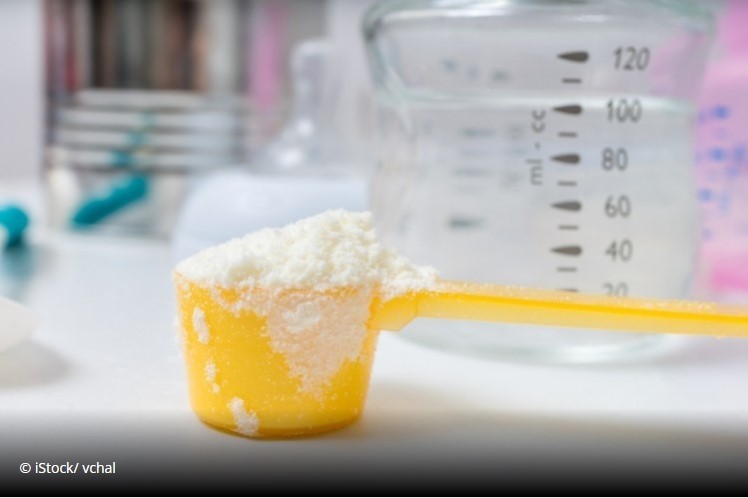Infant formula with added probiotics and oligosaccharides can improve gut health, say scientists

Scientists supplemented infant formula with the probiotic limosilactobacillus (L.) reuteri and HMO fucosyllactose (2’FL) and found significant microbial changes in infants included in the experimental group (EG).
They observed lower counts of opportunistic bacteria clostridioides difficle and klebsiella pneumoniae compared to the control (CG) and relative abundance of healthy bifidobacterium comparable to the breastfed (BF) group.
Subtle changes in gut microbiome were enhanced by the presence of L. reuteri, they assert, and was particularly apparent in infants born by caesarean section.
“We observed a fast recovery of bifidobacteria in both the EG and CG, and particularly in the caesarean-born infants, making them not different from BF and indicating a possible L. reuteri effect,” they write.
“L. reuteri can normalise the microbiota of caesarean-born infants and promoted bifidobacteria growth in the very early days of their microbiota establishment and likely plays a role of a keystone species, similar to the lactobacilli normally seeded from the vaginal microbiota.”
Health benefits
HMOs in breast milk have been shown to support and maintain diversity of gut microbiota and are a key factor in the development of an infant’s immune system. Evidence also suggests potential benefits on brain development, the authors explain.
Types and concentrations vary according to a women’s genetic profile and time of lactation, but fucosyllactose is a common HMO associated with reduced risk of illness or lower mortality in breastfed infants.
Meanwhile, L. reuteri probiotic has been found in breast milk and is associated with beneficial health effects, such as reducing crying and/or ‘fussing time’ in mainly breastfed infants and altering microbiota development in caesarean-born infants.
The study aimed to assess growth, gastrointestinal tolerance, as well as gut microbiome and intestinal maturation of infants fed formula milk fortified with the HMO and probiotic, compared to the control formula.
Study parameters
The six-month study involved 289 healthy infants randomly assigned to the experimental or control group at 14 days old. The CG consumed a bovine milk-based formula containing L. reuteri (DSM 17938), while the EG was given the same formula with added HMO, in a concentration that corresponds to levels observed in breastmilk. A non-randomised breastfed group (BF) of 60 infants was used as a reference.
Formula-fed infants were required to exclusively consume the study formula until at least four months of age, after which progressive introduction of complementary foods or liquids was allowed. Mothers of infants enrolled in BF were asked to continue exclusive breastfeeding up to at least four months.
Infants were approximately five to six days of age at enrolment and slightly less than half were male. A higher proportion of delivery via caesarean section and lower proportion of mothers completing college was found among formula-fed infants compared to BF.
Results were measured according to weight gain up to four months in the formula-fed infants. Additional anthropometric measures included gastrointestinal tolerance, stooling characteristics, adverse events (AEs), faecal microbiota and metabolism, and gut immunity and health biomarkers in all feeding groups.
Conclusion
Supplementation not only improved the gut microbial profile in formula-fed infants but supported age-appropriate growth, was well tolerated and safe, the authors maintain.
Results suggest that fucosyllactose (2’FL) has either a direct or indirect effect on infant gut ecology and are supported by previous in vitro work that identified a link between fucosyllactose (2’FL) and bifidobacterium abundance.
The authors add that findings should be interpreted within the context of L. reuteri, which is known to beneficially impact infant gastrointestinal symptoms and associated behaviour, as well as gut microbiota. As such, its presence in the CG limited their ability to assess the full effects of the HMO.
Source: Nutrition Journal
Published online: doi.org/10.1186/s12937-022-00764-2
‘Safety and efficacy of a probiotic-containing infant formula supplemented with 2’-fucosyllactose: a double-blind randomized controlled trial’
Authors: Philippe Alliet, Yvan Vandenplas, Paola Roggero, Sabine N. J. Jespers, Stefaan Peeters, Jean‑Philippe Stalens, Guus A. M. Kortman, Mailis Amico, Bernard Berger, Norbert Sprenger, Colin I. Cercamondi, and Giovanni Corsello






